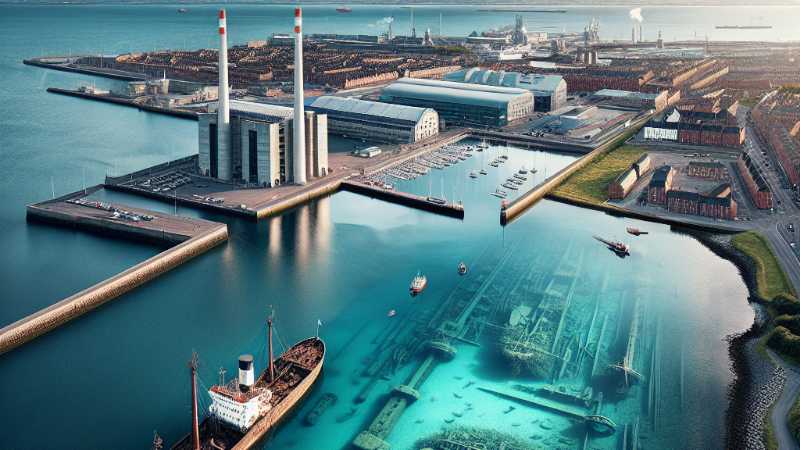Dublin Port Company (DPC) has introduced a new Conservation Strategy, illuminating the rich maritime history of Dublin Port from the depths of Dublin Bay to its industrial structures. Minister of State for Nature, Heritage, and Electoral Reform Malcolm Noonan launched the strategy, emphasizing its insights into the port’s natural, industrial, and cultural legacy.
For the first time in Dublin Port’s 300-year history, this comprehensive mapping strategy showcases the area’s layers of heritage, highlighting its significance.
This comprehensive document highlights the diversity of Dublin Port’s built environment and the responsibility of our stewardship
Lar Joye
An essential foundation of the project is Port-City Integration, the guiding principle for safeguarding and commemorating all facets of Dublin’s maritime legacy, from structures as significant as the Great South Wall to the historic photographs, maps, and drawings of the priceless Port Archive. It helps ensure that the city’s maritime heritage is celebrated and preserved for future generations.
Dublin Port through the ages
As a component of the strategy, a timeline has been created utilizing historical records from the Port Archive, detailing the progression of the Port’s expansion eastward from the 1600s to the present era. This timeline allows readers to follow the development of areas like the North and South Lotts, as well as the evolution of the present-day Dublin Port estate, which underwent reclamation from the sea over numerous centuries.
The archive holds a wealth of resources, comprising 75,000 photographs, 30,000 engineering drawings, 600 historical registers, yearbooks dating back to 1926, and a register of employees from 1906 to 1925.
Dublin Bay has been the site of more than 300 shipwrecks, yet only 18 have been precisely located. Additionally, findings from archaeological excavations and insights into the port’s industrial history have been meticulously documented.
The chronology provides insight into the pivotal influence that port operations have had on the city’s dynamics. Inspired by the concept of Baukultur, as detailed in the Davos Declaration, it advocates for a culture-centric approach to sustainable urban development.
The Conservation Strategy covers both legally protected monuments within the Port estate and those identified on the National Inventory of Architectural Heritage, such as the former Odlums Flour Mills. By safeguarding this diverse heritage landscape, the Strategy aims to enhance public appreciation and comprehension of Ireland’s economic, natural, and social history.
Unearthed treasures
Numerous heritage structures at Dublin Port have been constructed and maintained over the centuries. The project team unearthed and documented an 1826 patent slip in the Alexandra Basin. Following its discovery, the slip was secured, and specimens of its stonework were collected for preservation by the Dublin Port Company.
During dredging works in Dublin Bay, an intriguing discovery was made: the Millstone Wreck, a shipwreck that can be traced back to the 18th century. Following the strategy’s framework, the ship’s wooden structures and its load of millstones have been examined and preserved.
The story of Dublin Port is one that is crucial to our economy, but also to our social history.
Barry O’Connell
Dublin Port’s Conservation Strategy aims to protect its historical assets for future generations by making them accessible to the public. One such asset is Graving Dock No. 1, which is currently situated underground and adjacent to DPC’s performance venue. It is slated for excavation in conjunction with the Alexandra Basin Redevelopment (ABR) Project.
One of the primary objectives of the Conservation Strategy is to bridge the gap between Dublin Port’s past and present by making historical information more accessible to the broader community and inviting them to discover hidden gems within the port area.
“The Conservation Strategy allows us all to come to a richer understanding of the maritime and industrial heritage beneath our feet and all around us. This can serve as a roadmap for future planners, both inside and outside the Port, to help make the area a welcoming destination for the public,” said Barry O’Connell, chief executive of Dublin Port Company.
Appreciating Dublin Port’s maritime legacy and pledging to protect it is essential to fostering a more profound knowledge of Ireland’s historical, environmental, and cultural background.







